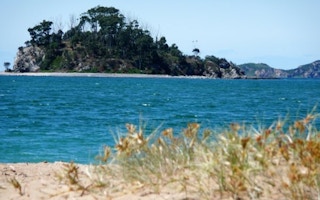Last week’s release of the 2012-13 Budget by the Gillard government reveals an interesting array of environmental and sustainability initiatives in store for Australia over coming years. Unfortunately, the key influences on budget allocation this year have been less environmental ethics and more political machinations – namely, the need to placate the powerful Greens Party and stay in power beyond the next federal election in 2013.
The government is clearly taking active steps towards transforming Australia’s national economy from old school (pollution heavy) to new school (greentech) with increased investment in renewable energy and energy efficiency - in addition to increased taxes for big polluters. Yet, powerful stakeholders in primary industry and the community continue to exert negative influence on policy and budget allocation, proving that we are still in the early days of the new economy.
Australian Conservation Foundation chief executive Don Henry says household tax cuts designed to offset the upcoming carbon tax won’t protect the natural environment and that mining subsidies are the real culprit. “Continuing the senseless diesel fuel handout to mining companies is a much bigger slug to Australian households than any carbon price, with the handouts to mining companies projected to increase to $182 per taxpayer, per year, costing $9.4 billion over the forward estimates,” he said.
Australia’s baby boomer generation has joined the mining industry as vocal opponents of the Carbon Tax by actively attending rallies and protests throughout the country. With life expectancy on the increase, the government cannot ignore the concerns of older voters who prioritise pensions and healthcare over environmental initiatives. Fortunately, the Greens party, which controls the balance of power in parliament, is vigilant in reminding the government of the need for a more sustainable economy.
Resources and energy initiatives
The government has continued to increase funding for specialised environmental initiatives within its resources industry and energy department, which is responsible for supporting rural communities. These include: Carbon Capture and Storage Flagships; Ethanol Production Grants; National Low Emissions Coal Initiative; the Global Carbon Capture and Storage Institute; the National CO2 Infrastructure Project; and the Coal Sector Jobs Package. Approximately 45 per cent of their grant expenditure over the next 12 months will be made to regional Australia – a figure which is expected to increase within the next few years to more than 65 per cent. Regional refers to large population centres outside the main cities.
From July 2012, the country will consolidate four renewable energy programs within its new Australian Renewable Energy Agency (ARENA) department – Solar Flagships, Australian Centre for Renewable Energy, Connecting Renewables Initiative and the Australian Solar Institute. Established in July 2011 to support renewable energy technology innovation, the ARENA aims to improve the competitive nature of these technologies in Australia and to increase the country’s supply of renewable energy.
Unfortunately, the government has reinforced its support of non renewable energy sources such as coal seam gas, while ignoring R&D projects such as Energetech’s wave energy device trials in Port Kembla. A failure to support the development of wave power generation along the east coast, where a concentration of Australia’s energy users are based, seems rather short-sighted. This focus on unsustainable short-term energy solutions is coupled with a renewed focus on carbon intensive road infrastructure – resulting in a budget that invests $14 of new spending on roads for each $1 spent on rail (reinforcing carbon tax costs incurred by individuals rather than corporations).
Rural and Regional Focus
The other key portfolio is Sustainability, Environment, Water, Population and Communities, which supports environment and sustainability programs in rural and regional communities. This enormous department also encompasses the Bureau of Meteorology, the Director of National Parks, the Great Barrier Reef Marine Park Authority, the Murray-Darling Basin Authority, the National Water Commission and the Sydney Harbour Federation Trust.
More than 90 per cent of its 2012-2013 budget will be allocated to three programs which contribute to the development of regional Australia: Sustainable Management of Natural Resources and the Environment; Carbon Pollution Reduction (Land Sector Initiatives); and Water Reform.
Not surprisingly, the forward estimate from 2012 to 2016 indicates Water Reform will receive the lion share of funding (at $3.84 billion, an estimated 63 per cent). The long-term Water for the Future initiative is designed to balance the water needs of communities, farmers and the environment by funding predominantly regional projects, such as modernised irrigation and increased recycling.
Urban projects will include desalinisation and stormwater capture. It’s disappointing to see that the government’s enthusiastic support for the National Rainwater and Greywater Initiative was not matched by the public. Aimed at encouraging the population to install household rainwater tanks and greywater systems that capture wastewater from drains and washing machines, it provided up to $500 per household but was scrapped in 2011 due to a lack of public support. Considering the fact that Australia suffers regular, intense droughts in both urban and rural areas, such national apathy is disappointing. Hopefully, the $14.5 million in savings (over three years) will be directed toward other water reforms. To date, these have been focused more on the water resource than the crucial input of local stakeholders.
The department will launch a range of new projects in 2012, including:
- The existing On-Farm Irrigation Efficiency Program will be expanded over six years, and provide $150 million for the modernisation of on-farm irrigation infrastructure;
- Long-term sustainability measures to protect one of the country’s significant World Heritage sites, the Great Barrier Reef;
- Measures to enhance the Bureau of Meteorology’s ability to respond to future extreme weather patterns and natural disaster events. Flood forecaster numbers will also be increased to support response capacity during the 2012-13 summer season;
- The Australian Antarctic Program will continue to develop its research and expedition activities over the next two years with shipping and aviation support valued at $29.8 million, plus ongoing funding for the four existing Australian Antarctic stations ($11.2 million);
- The Tiwi Land Council in the Northern Territory will receive $1 million for its Rehabilitation Management Plan for lands adversely affected by a local pulpwood plantation project.
Ongoing projects which will receive funding boosts include:
- The Four Clean Energy Future (Land Sector Package) initiatives;
- The Independent Expert Scientific Committee, which will provide advice to government about relevant coal seam gas and large coal mining projects as they affect water resources ($150 million over five years from 2011);
- Continued investment in the Caring for our Country initiative which focuses on improving biodiversity and adopting sustainable farming practices in remote and very remote areas ($2.2 billion from 2013 to 2018);
- Further investment in the Working on Country Indigenous Rangers Program (Caring for our Country) which provides training and employment for Indigenous people in regional Australia ($19.1 million for four years);
- Ongoing development of a National Wildlife Corridor Plan to guide conservation management and community engagement ($10 million over three years from 2011).
Despite the government’s aim to spread the benefits of the country’s mining boom to all Australians over coming generations, the business community has not responded well to this year’s budget. This is due to a lack of cuts to existing corporate tax rates and an absence of broad reform – all of which has reinforced the government’s focus on short-term consumption rather than long-term investment.
Ironically, this is a criticism shared by the stewards of sustainability and environmental protection.
All figures are in Australian dollars.
Katie Howe is a Director of Yellowbird Communications in Canberra.









